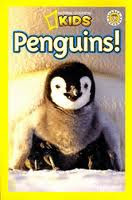I have several friends who’ve been complaining that this has
not been much of a winter. I don’t know
why that would bother anyone.
Personally, I like 90° weather with 90% humidity. So a December that fluctuates between 50° and
60° is okay with me. That said, I do
like the occasional snow, but only if it falls on a school day. Our recent snow flurries and winter mix were
a complete waste of winter weather, although the Christmas Eve flakes did
provide a nice backdrop for my dinner party.
Now it seems were going to get more snow tomorrow, and the only result
is I won’t be able to visit my niece as planned.
 However, for those of you who are fans of winter weather, I
have chosen some of my favorite snow books to share this week. The Snowy Day by Ezra Jack Keats is a
classic in this category. It perfectly
describes a little boy’s day in the snow, from putting on his snow suit to
trying to save a snowball in his pocket.
Cynthia Rylant, P.D. Eastman, and Uri Shulevitz all have books simply
titled Snow. While Rylant’s prose
is almost poetry, Eastman focuses on fun, and Shulevitz’s book is a narrative
of a surprise snowfall.
However, for those of you who are fans of winter weather, I
have chosen some of my favorite snow books to share this week. The Snowy Day by Ezra Jack Keats is a
classic in this category. It perfectly
describes a little boy’s day in the snow, from putting on his snow suit to
trying to save a snowball in his pocket.
Cynthia Rylant, P.D. Eastman, and Uri Shulevitz all have books simply
titled Snow. While Rylant’s prose
is almost poetry, Eastman focuses on fun, and Shulevitz’s book is a narrative
of a surprise snowfall.  If you want non-fiction, I’d recommend The Story of Snow
by Mark Cassino. The text explains how
snow is formed and the pictures are photographs of real snowflakes. And since were talking about photographing
snowflakes, we should talk about Snowflake Bentley by Jacqueline Briggs
Martin. This is a biography of Wilson
Bentley who proved that no two snowflakes are alike. Aside from being a good story about an
interesting scientist, the themes of perseverance and hard work are important
lessons. Over and Under the Snow
by Kate Messner is narrative non-fiction about the animals that hibernate under
the snow.
If you want non-fiction, I’d recommend The Story of Snow
by Mark Cassino. The text explains how
snow is formed and the pictures are photographs of real snowflakes. And since were talking about photographing
snowflakes, we should talk about Snowflake Bentley by Jacqueline Briggs
Martin. This is a biography of Wilson
Bentley who proved that no two snowflakes are alike. Aside from being a good story about an
interesting scientist, the themes of perseverance and hard work are important
lessons. Over and Under the Snow
by Kate Messner is narrative non-fiction about the animals that hibernate under
the snow.  For bigger kids, I like Brian’s Winter by Gary
Paulsen. It’s the sequel to Hatchet,
in which Brian’s plane crashes in the Canadian wilderness. In the second book, Paulsen imagines what
would happen if Brian hadn’t been rescued at the end of the Hatchet, and
tells the tale of survival through a cold, Canadian winter. Then there’s I am the Ice Worm, the
girl version of Hatchet, in which Allison’s plane crashes in
For bigger kids, I like Brian’s Winter by Gary
Paulsen. It’s the sequel to Hatchet,
in which Brian’s plane crashes in the Canadian wilderness. In the second book, Paulsen imagines what
would happen if Brian hadn’t been rescued at the end of the Hatchet, and
tells the tale of survival through a cold, Canadian winter. Then there’s I am the Ice Worm, the
girl version of Hatchet, in which Allison’s plane crashes in
For something a little unorthodox try Bodies from the
Ice, Melting Glaciers and the Recovery of the Past. It’s a non-fiction text about the discovery
of the ice mummy in the Alps . A fascinating read for most 10 year-old
boys. Enjoy the snow!
Books about Snow
The Snowy Day by Ezra Jack Keats
Snow by Cynthia Rylant
Snow by P.D. Eastman
Snow by Uri Shulevitz
Bear Snores On by Karma Wilson
The Jacket I Wear in the Snow by Shirley Neitzel
Winter: An Alphabet Acrostic by Steven Schnur
Over and Under the Snow by Kate Messner
The Story of Snow by Mark Cassino
Brian’s Winter by Gary Paulsen
I am the Ice Worm by MaryAnn Easley
Bodies from the Ice, Melting Glaciers and the Recovery of
the Past by James Deem
















































